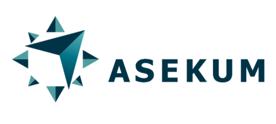
1. What does the RPA developer do?
Answer: The RPA developer is responsible for the construction of the robots and their development (or bug fixes). It is the person who creates the robot’s code and shows it how to perform a given task.
2. Does RPA require coding skills?
Answer: RPA software providers most often create their products in such a way as to provide business users with the ability to create robots without any programming knowledge. Modern environments and technologies contain features that can be used to prepare a Digital Teammates without having to write any code.
3. What does the RPA analyst do?
Answer: The RPA analyst identifies processes that can be robotized. The person is also responsible for preparing the documentation of these processes, collects requirements and guidelines from employees and people works.
4. What is hyperautomation?
Answer: Hyperautomation is an extremely popular term for activities extending automation beyond the framework of a single technology or tool. It is based on the use of a wide range of technologies adapted to specific processes. Its main goal is to effectively identify and automate each repetitive task in the organization.
5. How does hyperautomation work?
Answer: Hyperautomation combines such technologies as: RPA, Low Code/No Code, BI, ML and AI. It enables the automation of virtually every repetitive task in the company, making it an ideal way to achieve the digital transformation of the organization.
6. How is hyperautomation different from automation?
Answer: Automation in practice concerns the use of one methodology or tool. Hyperautomation allows for a much more flexible selection of appropriate means to achieve a business result by combining various methodologies, technologies and tools.
7. What is Blue Prism Process Studio?
Answer: The robotic process automated using Blue Prism is created as a diagram that looks very similar to a regular business flow chart. Blue Prism Process Studio is a tool that uses standard symbols and schematic notation to create processes ready to be handed over to robots.
8. Can the processes created in Blue Prism be audited?
Answer: Security and audit capabilities are built into the Blue Prism robot automation platform. The runtime itself is completely separate from the process editing environment. Blue Prism maintains a full audit trail of changes to each process and provides before and after comparisons.
9. Will robotization using Blue Prism change existing systems?
Answer: Robotization with Blue Prism does not affect existing systems in any way. Data is collected using various techniques and interfaces that ensure that the underlying systems remain unchanged.
10. What is the Robotic Operations Centre?
Answer: The Robotic Operations Center (ROC) is a department that specializes in fast automation and high-quality change management. Where CoE supports RPA deployment, ROC supports existing robots, automates new processes, manages RPA-related security, and performs compliance checks for more mature RPA models.
11. What is Low Code Platform?
Answer: Low Code Platforms allow you to model business processes using graphics defining individual steps of the process. This form of process visualization is much simpler and less time-consuming than writing code. In addition, graphical visualization is definitely more understandable for third parties and people who do not know programming.
12. What does No Code robotization mean?
Answer: No Code Platforms allow you to create robots completely visually, using ready-made components. There is no need to know any programming language. Robots are created only by combining prepared modules to reflect the course of a business process.
13. What does a business process robotization consultant do?
Answer: The RPA consultant identifies and evaluates the processes in terms of the possibility of handing them over to robots. The person also analyzes and recommends changes in business processes in order to optimize them. The RPA consultant works with other product teams to implement RPA in companies in the best possible way.
14. What is the difference between structured and unstructured data?
Answer: Structured data comes from – for example – transactions, invoices, bank statements and management systems, while unstructured data comes from emails, blogs, but also all social media activity. There are also semi-structured data that are obtained in the form of text or system logs.
15. What “professions of the future” are related to robotization?
Answer: The professions of the future can be defined, among others: RPA Developer, RPA Analyst, RPA Tester, Robot Maintenance Technician or Robo Shepherd.





